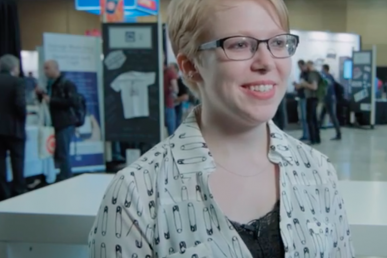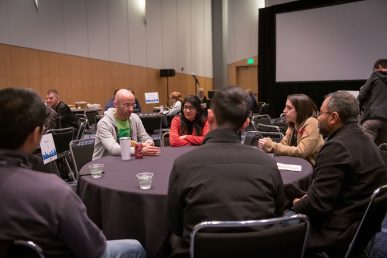If you’re new to OpenStack and want to get started contributing, OpenStack Foundation Community managers are here to help. Ildiko Vancsa, ecosystem technical lead, Kendall Nelson, upstream developer advocate and Mike Perez, development coordinator have a ton of tips for moving forward.
I’m new to OpenStack – how can I get started contributing?
If you are already planning on attending one of the upcoming summits, come a few days early so that you can come to the OpenStack Upstream Institute. It’s a day-and-a-half long training that teaches you the basics of the community, what tools you will be using on a regular basis and walks you through the contribution process.
Start engaging with the community. I can be cautious when approaching unfamiliar communities. As being part of OpenStack for quite some time, I have always wished I would’ve engaged sooner so I could’ve learned things faster.
Engagements and contributions come in different forms. Contributing to OpenStack is far more than code, after all, we’re more than just code, we’re a community. Having a healthy community requires expertise of all different kinds, therefore you should feel like you have something to offer.
An example of a contribution other than code is the UX work that was led to by Pieter Kruithof in doing user studies to improve the OpenStack Client. That work was tremendous in informing the OpenStack Client how people were intending on using the client.
After attending upstream training, how can I find tools and resources to stay connected to the community and continue contributing?
The OpenStack Foundation and Documentation team have been working together in providing great resources for new and current OpenStack Contributors. The Contributor Portal provides a list of different ways our community contributes, and ways you can get involved in those areas.
For the veteran contributors, a link of some common resources is provided, which can be helpful for reference for yourself, or pointing a fellow contributors to.
The Developer Digest provides some quick points of conversations that can sometimes be over 50+ message threads. If you don’t have time to scan through hundreds of emails weekly, definitely give the digest a read. It’s also community contributed, so another way you can get involved in the community!
Where is my help needed in the OpenStack community?
The OpenStack Technical Committee approves the Top 5 Most Wanted Help that are proposed by the community. These are recognizing essential parts in our community that need help. For example documentation is so essential for our users to use OpenStack. Due to some events, we’ve lost a great deal of our documentation team. We now have specifications set that are being led by some people in our community who don’t normally focus on documentation core tasks, which is a great help to the Documentation team. You can also help!
What does it take to keep being a successful contributor?
Now that you’re engaged with the community you must stay engaged. It only takes a few days to get behind on the various mailing lists. It’s going to seem extremely overwhelming and easy to just subscribe yourself to all the initiatives in OpenStack. You’ll eventually figure out what various channels you need to keep a close eye on to stay up-to-date:
- Figure out what you’re going to contribute to.
- Subscribe to the various things that your project group is involved with.
- Join IRC channels
- Subscribe to some mailing lists. You’ll get lots of email from some so make sure to setup folder filters!
- Filter for messages in the various mailing lists for the subject containing tags of the project you’re part of. (e.g. for the Cloud Kitty Project the subject would contain [cloudkitty]).
Keeping up with the various OpenStack mailing lists can be tough, but luckily we have great summary resources in the OpenStack Blog like the OpenStack Dev Digest for keeping up with the Dev list, or the User Group Newsletter.
Events are great to learn and hear from fellow members of the community of their experiences with OpenStack. You might discover something you can help contribute to the community!
Here’s a quick cheat sheet of events:
- Project Team Gathering (PTG) – Every six months (Q1 and Q3), at the beginning of the development phase of a release cycle, project teams will meet in person to discuss priorities for the upcoming cycle, iterate quickly on solutions for complex issues and make fast progress on critical items. It’s part of a reorganization of the event formerly known as the Design Summit, which is now split between our biannual Summit (where feedback listening, requirements gathering and cross-community discussions happen) and the PTG (where the actual development work is being organized.) More info
- The Forum – The entire OpenStack community (users and developers) gathers to brainstorm the requirements for the next release, gather feedback on the past version and have strategic discussions that go beyond just one release cycle. The OpenStack Foundation offers a Travel Support Program to help cover travel expenses. More info
If your company is unable to pay for you to attend the various OpenStack events, you can apply for the OpenStack Foundation’s travel support program.
- For a happier open source community, give recognition - February 16, 2018
- Tips for contributing to OpenStack - January 29, 2018
- Two ways to contribute to OpenStack to make a big impact - July 20, 2017

)










